Disappearing Delta Reading Answers
5 min read
Updated On
-
Copy link
Table of Contents

Limited-Time Offer : Access a FREE 10-Day IELTS Study Plan!
The Academic passage ‘Disappearing Delta’ is a reading passage that appeared in an IELTS Test.
Since questions get repeated in the IELTS exam, these passages are ideal for practice. If you want more practice, try taking an IELTS reading practice test.
Disappearing Delta
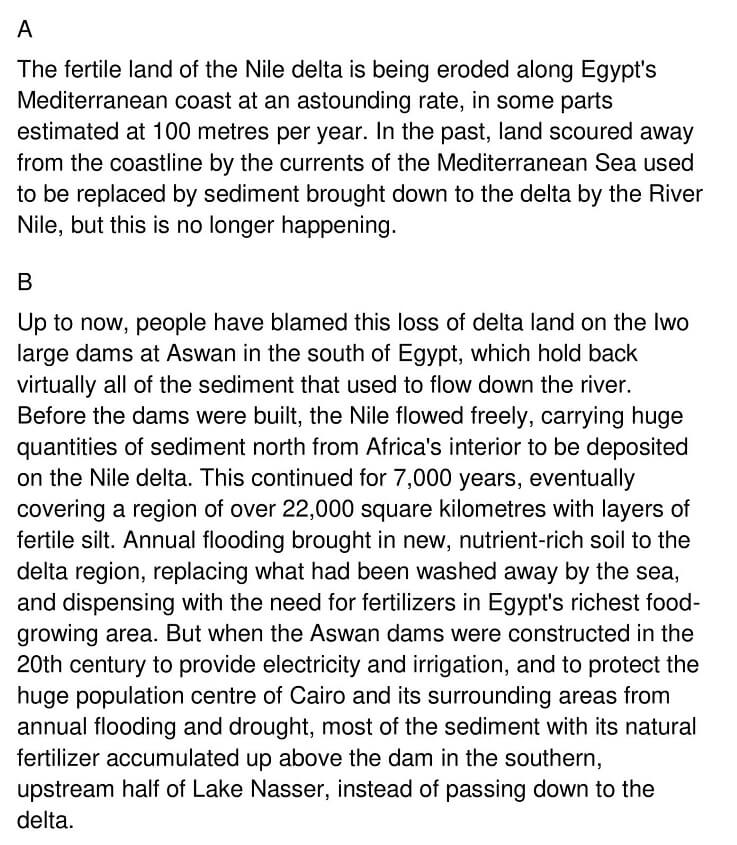
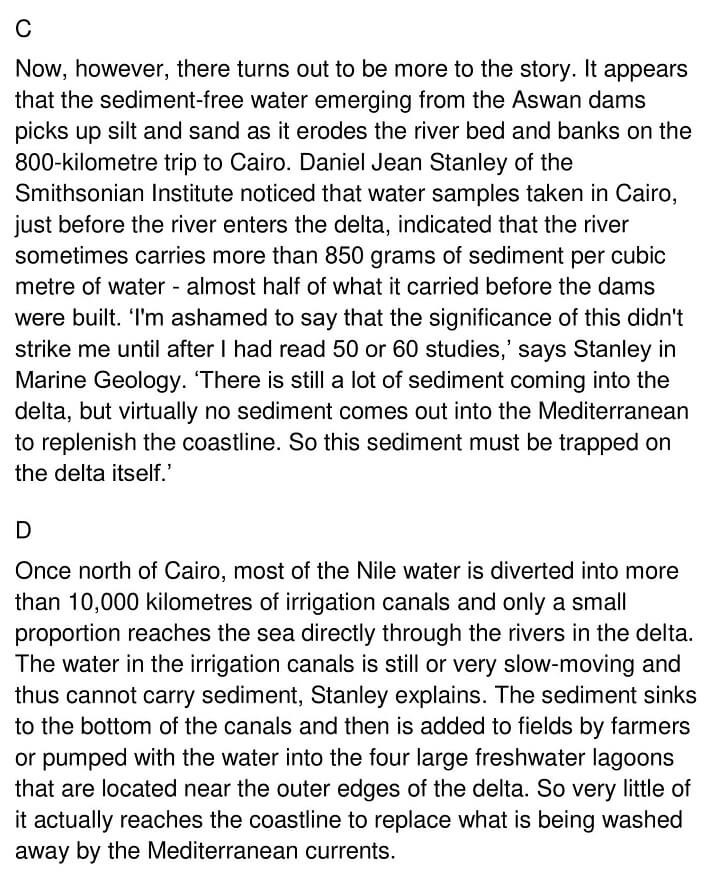

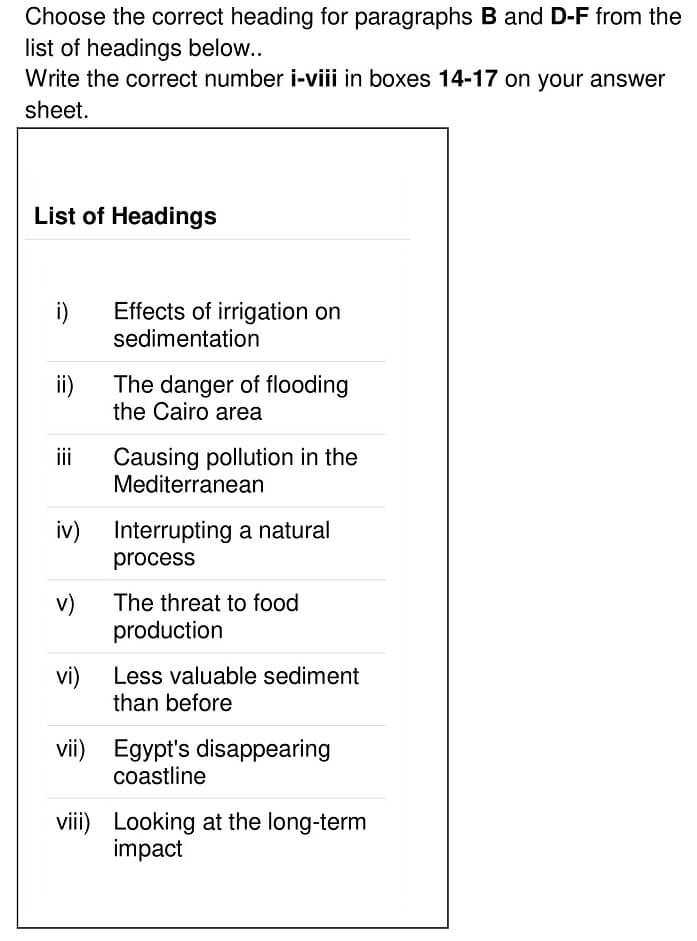
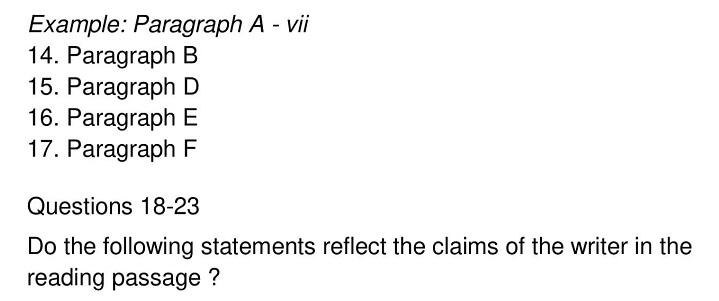

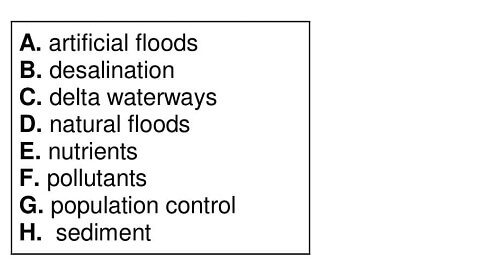
Answers
| Question Number | Answers | Explanation |
|---|---|---|
| 14 | iv | It is mentioned in paragraph B that people have blamed the loss of delta land on the lwo
large dams at Aswan in the south of Egypt, which ‘hold back all of the sediment that used to flow down the river’. ‘Before the dams were built’, the Nile ‘flowed freely, carrying huge quantities of sediment north’ from Africa’s interior to be deposited on the Nile delta. But ‘when the Aswan dams were constructed’ in the 20th century, most of the sediment with its natural fertilizer accumulated up above the dam in the southern, upstream half of Lake Nasser, instead of passing down to the delta. Hence, the answer is iv (Interrupting a natural process). |
| 15 | i | Paragraph D informs that once north of Cairo, most of the Nile water is diverted into more
than ‘10,000 kilometres of irrigation canals’ and only a small proportion reaches the sea directly through the rivers in the delta. The ‘water in the irrigation canals is still or very slow-moving’ and thus ‘cannot carry sediment’. The ‘sediment sinks to the bottom of the canals’ and then is ‘added to fields by farmers or pumped with the water into the four large freshwater lagoons’ that are located near the outer edges of the delta. Hence, the answer is i (Effects of irrigation on sedimentation). |
| 16 | v | Paragraph E mentions that the ‘farms on the delta plains and fishing and aquaculture’ in the lagoons ‘account for much of Egypt’s food supply’. ‘But by the time the sediment has come to rest in the fields and lagoons’, it is ‘laden with municipal, industrial and agricultural waste from the Cairo region’, which is home to more than 40 million people.
Hence, the answer is v (The threat to food production). |
Unlock Answers
| 17 | viii | Paragraph F states that Siegel says that international environmental organisations are
beginning to pay closer attention to the region, partly because of the problems of erosion and pollution of the Nile delta, but principally because they fear the impact this situation could have on the whole Mediterranean coastal ecosystem (long term effect). In the immediate future, Stanley believes that ‘one solution’ would be to ‘make artificial floods to flush out the delta waterways’, in the same way that natural floods did before the construction of the dams. He says that ‘in the long term’, an alternative process such as desalination may have to be used to increase the amount of water available. Hence, the answer is viii (Looking at the long-term impact). |
| 18 | YES | Paragraph A points out that in the past, ‘land scoured away from the coastline’ (coastal erosion) by the currents of the ‘Mediterranean Sea’ used to be replaced by sediment brought down to the delta by the River Nile, but this is no longer happening (after building of the Aswan dams). Hence, the statement agrees with the information and the answer is ‘Yes’. |
| 19 | NOT GIVEN | It is mentioned in the first sentence of paragraph B that people have blamed the ‘loss of delta land on the two large dams at Aswan’ in the south of Egypt, which hold back all of the sediment that used to flow down the river. Although there is a mention of the dams being responsible for land loss now, there is no reference that some people predicted it before they were built. So, the information is not given in the passage and the answer is ‘NOT GIVEN’. |
| 20 | NO | In paragraph B, it is given that when ‘the Aswan dams were constructed in the 20th century’ to ‘provide electricity and irrigation’, and ‘to protect the huge population centre of Cairo and its surrounding areas’ from annual flooding and drought, ‘most of the sediment’ with its natural fertilizer ‘accumulated up above the dam’ in the southern, upstream half of Lake Nasser, ‘instead of passing down to the delta’. So, it is mentioned that the main reason for constructing the dams was to produce electricity and irrigation. As the statement contradicts the information in the passage, the answer is ‘No’. |
| 21 | YES | Paragraph C informs that ‘Daniel Jean Stanley’ of the Smithsonian Institute noticed that ‘water samples taken in Cairo’, just before the river enters the delta, ‘indicated’ that the ‘river’ sometimes ‘carries more than 850 grams of sediment per cubic metre of water – almost half of what it carried before the dams were built. There is ‘still a lot of sediment coming into the delta’. Hence, the statement agrees with the information and the answer is ‘Yes’. |
| 22 | NOT GIVEN | In paragraph D, the writer writes that the water in the irrigation canals is still or very ‘slow-moving’ and thus ‘cannot carry sediment’. The sediment sinks to the bottom of the canals and then is added to fields by farmers
or pumped with the water into the four large freshwater lagoons that are located near the outer edges of the delta. So ‘very little of it actually reaches the coastline’ to replace what is being washed away by the Mediterranean currents. There is no reference to flooding in relation to the irrigation canals mentioned here. So, the information is not given in the passage and the answer is ‘NOT GIVEN’. |
| 23 | YES | Paragraph D points out that ‘the water in the irrigation canals is still or very slow-moving’ and thus ‘cannot carry sediment’. The sediment sinks to the bottom of the canals and then is added to fields by farmers or ‘pumped with the water into the four large freshwater lagoons’ that are located near the outer edges of the delta. Hence, the statement agrees with the information and the answer is ‘Yes’. |
| 24 | (F) pollutants | In paragraph E, the writer writes that by the time
the sediment has come to rest in the fields and lagoons, ‘it’ (sediments) is ‘laden with municipal, industrial and agricultural waste from the Cairo region, which is home to more than 40 million people. Pollutants are building up faster and faster. Hence, the answer is ‘pollutants’. |
| 25 | (A) artificial floods | Paragraph F give out the fact that Stanley believes that in ‘the immediate future’ (short-term), ‘one solution’ would be to make ‘artificial floods’ to ‘flush out the delta
waterways’, in the same way that natural floods did before the construction of the dams. Hence, the answer is ‘artificial floods’. |
| 26 | (B) desalination | In paragraph F, Stanley continues to say that ‘in the long term’ an ‘alternative process such as desalination’ may have to be used to increase the amount of water available. Hence, the answer is ‘desalination’. |
Check More IELTS Reading Answers
Also check :
Practice IELTS Reading based on question types

Start Preparing for IELTS: Get Your 10-Day Study Plan Today!
Recent Articles

Nehasri Ravishenbagam

Haniya Yashfeen

Haniya Yashfeen

Haniya Yashfeen
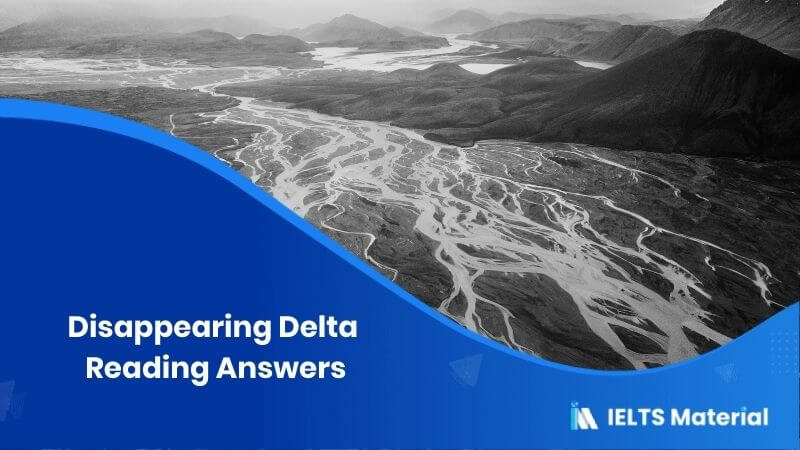



Post your Comments